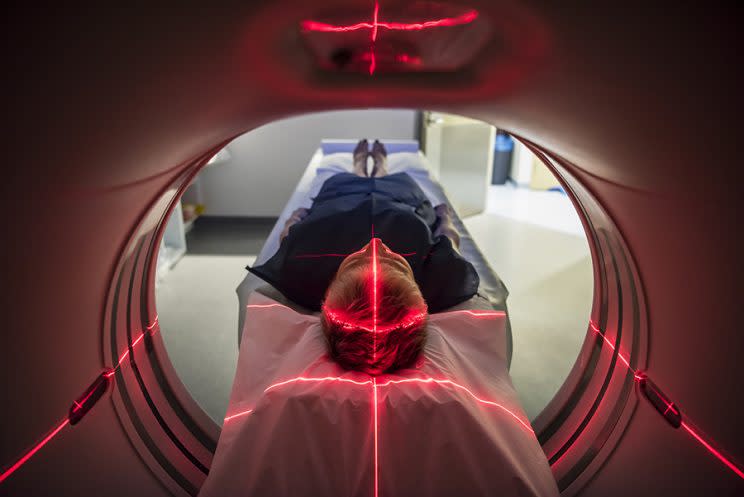Why Are Wealthier People More Likely to Be Diagnosed With Cancer?

Researchers from the Dartmouth Institute for Health Policy and Clinical Practice have found that affluent people tend to have higher rates of cancer. And now they’re examining the possible reasons why this may be occurring.
In an article entitled “Income and Cancer Overdiagnosis — When Too Much Care Is Harmful” published in the New England Journal of Medicine, the authors examined incidence and mortality trends for four types of cancers: breast cancer, prostate cancer, thyroid cancer, and melanoma. They chose these specific cancers “because the likelihood of diagnosis is sensitive to the intensity with which physicians look for these cancers,” as stated in the press release. In other words, the harder doctors look for these cancers, the more they will find.
The following information was gathered from using U.S. census data from 2000:
High-income counties have recorded a much greater increase in the incidence of these four cancers than low-income counties.
The combined death rate from the four cancers is similar in high- and low-income counties, which the authors say suggests that the underlying burden of disease is actually similar in high- and low-income counties.
Mortality from these cancers hasn’t been increasing (as one might expect given the increase in diagnosis), but rather decreasing due largely to improved treatments for breast and prostate cancer.
The researchers concluded that a combination of factors may have led to these findings. For instance, financially secure people may demand more testing and “health systems serving relatively wealthy and healthy populations may see offering more testing as a good way to produce more patients and increase business.”
“I think their data is fascinating with good science, but I wonder if they’re asking the right questions,” Rhonda M. Stolec-Campo, associate executive director of destination medicine at the James Cancer Hospital and Solove Research Institute at Ohio State University Wexner Medical Center, tells Yahoo Beauty. “They say it is about wealthy versus not wealthy, but is it actually people who have access to health care versus people who don’t have access to health care?”
She explains that these types of “disparate results” are often seen in cancer patients among urban and rural populations.
“A rural population that doesn’t have access to an academic teaching center or the best diagnosis tools tend to be diagnosed later when they’re sicker — and that’s independent of what kind of insurance they have or how wealthy they are,” continues Stolec-Campo.
And there are considerable differences between teaching hospitals and community hospitals that should be taken into account as well.
“The bottom line is teaching hospitals have newer equipment, they get their equipment calibrated, their software is updated, and they have physicians who are trained in the latest techniques and who stay up with the latest drugs,” states Stolec-Campo. “I’m not disparaging community hospitals, but they may not have the money to buy the best diagnostic equipment or to upgrade the software for their MRI [magnetic resonance imaging]. So a patient that goes to that community hospital — whether they have great insurance or whether they are uninsured — [may be misdiagnosed]. And it may not even be a function of [coverage] as much as a function of what the hospital and physicians have available.”
Another possible angle, suggests Stolec-Campo: examining the rates of cancer at nonprofit hospitals versus private or for-profit hospitals.
“The for-profit hospitals will deny this all day long, but some of them will look at the patient’s insurance and then start the testing gamut,” she says. “If you have Medicare, if you have a nice commercial insurance — someone who is going to be a ‘good payer’ — a private hospital that has investors who are expecting a certain percentage return on their investment, that private hospital may overtest those patients.”
Stolec-Campo also questions if it would be helpful to expand on these current findings by dividing the same populations based on education levels. “For example, are people who are better educated more likely to go for that mammogram than the person who didn’t finish school?” she asks.
As for possible ways to remedy this complex situation, Stolec-Campo agrees with the study authors for suggesting alternate payment methods. “A single payer system would eliminate some of the games that hospital reimbursement can play,” she adds. “It would eliminate cost shifting, and it might eliminate some of the unintended consequences we get now from having multiple payers.”
She also concurs with the investigators about the fact that financial conflicts of interest should be addressed. “If you receive money from a pharmaceutical company today, you have to disclose it any time you write an article, any time you give a speech, or sometimes before you put a patient on a certain drug,” says Stolec-Campo. “But in community practices or private offices, you don’t know if the doctor is receiving samples from a pharmaceutical company or not.”
Stolec-Campo adds that advertisements for prescription drugs may also play a part in patients being overtreated. “These commercials have created demand where it may not be appropriate,” she states. “It’s really interesting, but I don’t know if we have looked at this carefully enough to know what the impact has been.”
Read more from Yahoo Style + Beauty:
New Cancer Drug Is So Effective Against Tumors, the FDA Approved It Immediately
Vigorous Exercise Helps Lower Breast Cancer Risk for Both Younger and Older Women
Follow us on Instagram, Facebook, and Pinterest for nonstop inspiration delivered fresh to your feed, every day. For Twitter updates, please follow @YahooStyle and @YahooBeauty.
